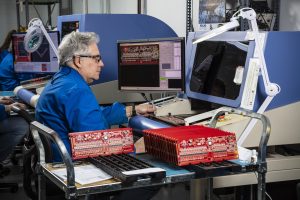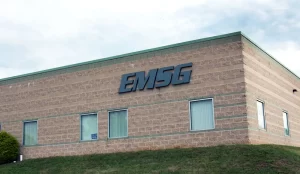PCB units are present in technologies used for both work and leisure. Some of the main professional uses of printed circuit boards relate to the automotive, industrial and medical industries.
Automotive PCBs
Climb into any modern vehicle and you’re sure to find a handful of flexible PCBs inside the cabin. Automakers look to flexible PCB technology to program entertainment systems, temperature control switches and navigation devices. Integrating a flexible PCB unit into a vehicle is a great way to configure safety features so that they perform when exposed to vibrations and changes in temperature.
Industrial PCBs
Printed circuit boards help reduce the number of human errors in a manufacturing facility due to their automation capabilities. High-powered presses, ramps and pressure readers commonly showcase high-frequency PCBs for demanding applications that call for accuracy.
Medical PCBs
Medical professionals rely on compact PCB varieties to administer medications, monitor vital signs and diagnose chronic health issues. Rigid-flex PCBs often make their way into pacemakers, X-ray machines, CT scanning systems and other medical-grade equipment due to their reliability. As medical technology continues to shrink in size, the opportunities for printed circuit board installations grow larger.
Other Examples of PCBs in Real Life
You can find dozens of PCB units in home appliances and “smart” installations that connect to phones, laptops and mobile devices. Below are some popular examples of technologies that contain a PCB:
- Coffee makers
- Refrigerators
- Microwaves
- Home thermostats
- Lighting controls
- Powered door locks
- Televisions
- Gaming consoles


 A printed circuit board (PCB) can be defined as a single or multilayer surface used to mount components of an electronic system. These units help keep delicate components such as capacitors, resistors, diodes and semiconductors organized for transmitting input data from one location to another. Printed circuit boards can take on numerous shapes and sizes to account for the application at hand.
A printed circuit board (PCB) can be defined as a single or multilayer surface used to mount components of an electronic system. These units help keep delicate components such as capacitors, resistors, diodes and semiconductors organized for transmitting input data from one location to another. Printed circuit boards can take on numerous shapes and sizes to account for the application at hand.
